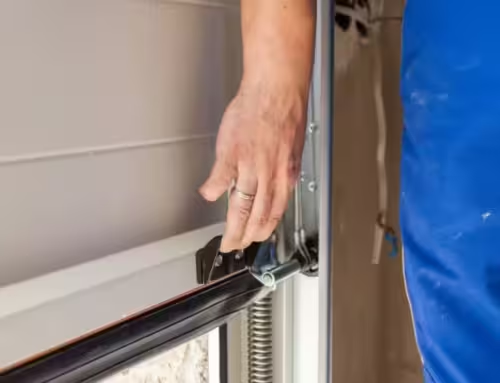Garage door springs are critical components that counterbalance the weight of the door, making it easier to open and close. There are two main types of garage door springs:
1. Torsion Springs
How They Work:
Mounted horizontally above the garage door opening, torsion springs use torque (twisting force) to lift the door. When the door closes, the springs wind up; when it opens, they unwind and release stored energy.
Pros:
-
✅ Durability: Typically last longer (15,000–20,000 cycles) than extension springs.
-
✅ Smoother Operation: Offers better balance and smoother motion.
-
✅ Safety: Less likely to snap and fly across the room due to being mounted on a shaft.
-
✅ Customizable: Can be fine-tuned for different door weights and sizes.
Cons:
-
❌ Higher Cost: More expensive to purchase and install.
-
❌ Complex Installation: Requires special tools and expertise, not ideal for DIY without experience.
2. Extension Springs
How They Work:
Mounted on both sides of the garage door, these springs stretch and contract as the door opens and closes. Common in older and lighter garage doors.
Pros:
-
✅ Lower Cost: Cheaper to buy and install.
-
✅ Easier DIY Replacement: Simpler to replace for someone handy.
Cons:
-
❌ Shorter Lifespan: Typically 5,000–10,000 cycles.
-
❌ Safety Risks: Can be dangerous if they snap (unless equipped with safety cables).
-
❌ Less Smooth: Door motion may be more jerky or unbalanced.
-
❌ Requires More Space: Needs more room on the horizontal tracks to function properly.
3. Torquemaster Springs (Less Common – Wayne Dalton Exclusive)
How They Work:
An enclosed torsion spring system housed inside a steel tube above the door.
Pros:
-
✅ Aesthetically Pleasing: Hidden inside a tube, looks cleaner.
-
✅ Safety: Fully enclosed, reducing injury risk from spring failure.
Cons:
-
❌ Proprietary Parts: Only compatible with certain brands (e.g., Wayne Dalton).
-
❌ Harder to Service: Not easily repairable without specific tools or replacement kits.
-
❌ Shorter Lifespan: Typically doesn’t last as long as traditional torsion springs.
Summary Table:
| Type | Lifespan (Cycles) | Cost | Safety | Ease of Install | Performance |
|---|---|---|---|---|---|
| Torsion Springs | 15,000–20,000 | $$$ | High | Moderate–Hard | Smooth, Balanced |
| Extension Springs | 5,000–10,000 | $ | Medium (with cable) | Easy–Moderate | Less Smooth |
| Torquemaster | ~10,000 | $$ | Very High | Hard (pro only) | Moderate |
If you’re choosing for a new install or replacement, torsion springs are typically the best long-term investment, especially for heavier or frequently-used garage doors. If you have any questions, definitely contact us here!






